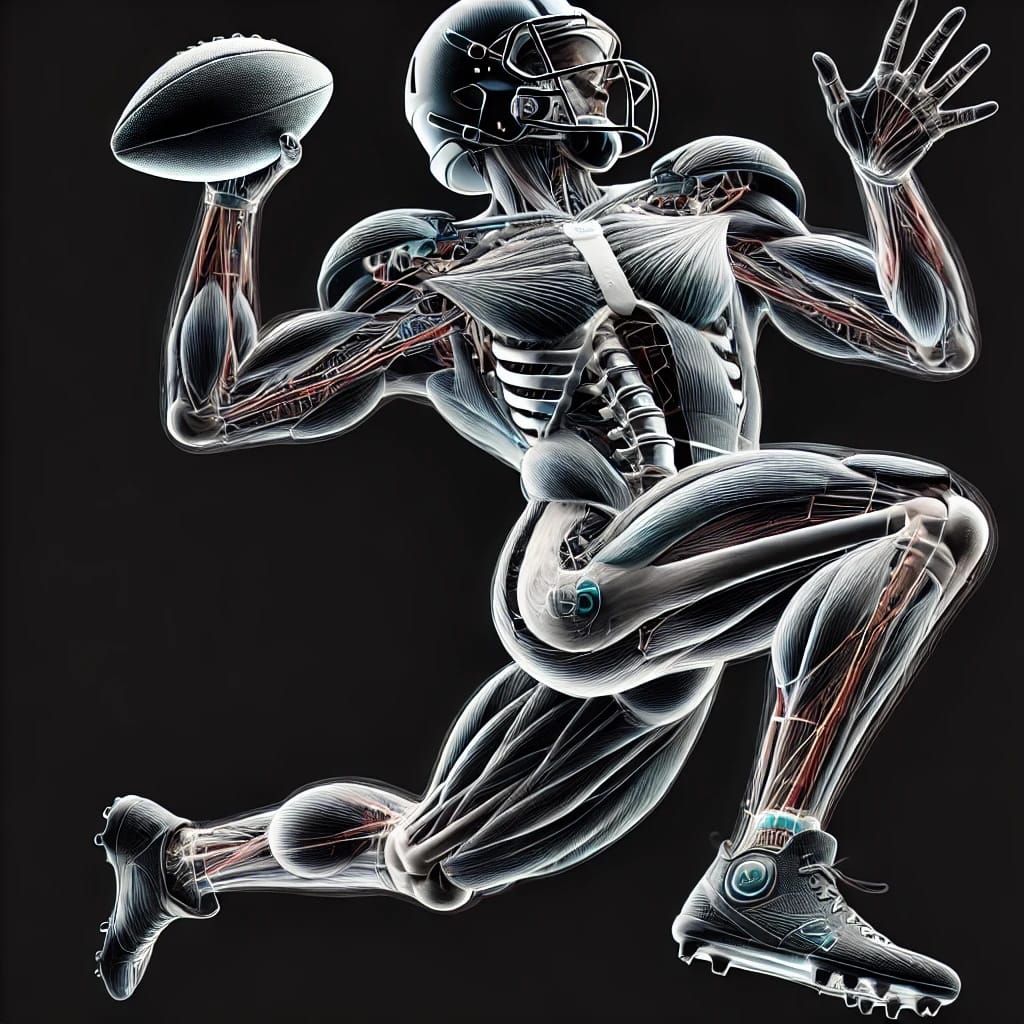A Beginner’s Guide to Applied Biomechanics in Sports

Applied biomechanics uses principles from physics to understand and improve human movement. In sports this allows science to explain the why and the how of elite athletes' movements. The goal of applied biomechanics is NOT to provide a rigid guide telling the athlete how TO move, instead it serves as a framework of information detailing how THEY move. An athlete's unique movement patterns and compensations serve as both unicorn traits but also, at times, inefficiencies. This field is essential for athletes and coaches who want to optimize performance and reduce injury risks.
Axis and Planes of Movement
Every movement revolves around an axis of movement—an imaginary line about which the body rotates.
Movements occur in three primary planes of movement:
• Sagittal Plane: Divides the body into left and right halves. Movements include flexion and extension (think of a bicep curl).
• Frontal Plane: Divides the body into front and back halves. Movements like abduction and adduction (raising and lowering your arm to the side).
• Transverse Plane: Divides the body into top and bottom halves. Rotational movements, such as twisting the torso, take place in this plane.
Understanding these planes helps coaches develop training programs that address all directions of movement. For quarterbacks a unique variable is that throwing serves as a rapid TRI-PLANAR activity, meaning stability, mobility and power all have to be expressed over in 3 planes in a short window of time.
Force Vectors
Force vectors describe forces in terms of magnitude (how strong) and direction (where they’re applied). For example, when a quarterback throws a ball, the force applied is directed toward the ball, affecting its speed and distance (and spin rate). Analyzing these vectors helps in designing exercises that improve strength and power by focusing on the right direction of force application.
Degrees of Freedom
Degrees of freedom refer to the number of independent movements a joint or body part can perform. A shoulder, with many degrees of freedom, can move in multiple directions, while a knee primarily moves in one plane (Sagittal). Balancing degrees of freedom is key; too many can lead to instability, and too few can restrict movement. Coaches use this concept to fine-tune exercises that stabilize joints while allowing optimal movement.
Arthrokinematics, Kinematics, and Kinetics
• Arthrokinematics focuses on the small, often unseen movements within a joint—like rolling or gliding—to maintain centration.
• Kinematics deals with describing motion (displacement, velocity, and acceleration) without considering the forces behind the movement. It answers “how” the movement occurs.
• Kinetics looks at the forces that cause movement, such as muscle forces and ground reaction forces. This analysis helps in understanding how to generate power and improve efficiency.
Bringing It All Together
When improving a sports skill—like throwing— elite coaches assess movement in all planes, consider the axis of rotation, and analyze force vectors to ensure maximum power and efficiency. They also evaluate the degrees of freedom in joints and study both the subtle joint movements (arthrokinematics) and the overall motion (kinematics and kinetics) to develop better training strategies.
From experts who work with 20+ NFL QBs, get personalized QB-specific throwing, arm care, lifting, and speed training by taking the assessment at kinetex.co. For insights on quarterbacking and biomechanics, subscribe here.
